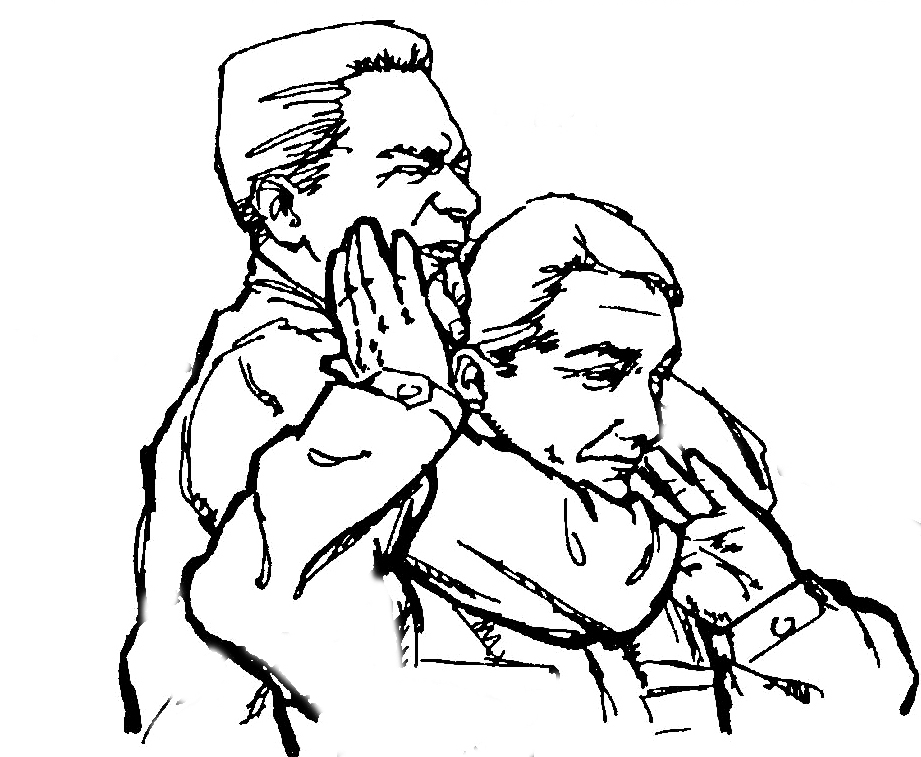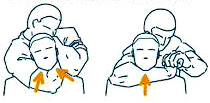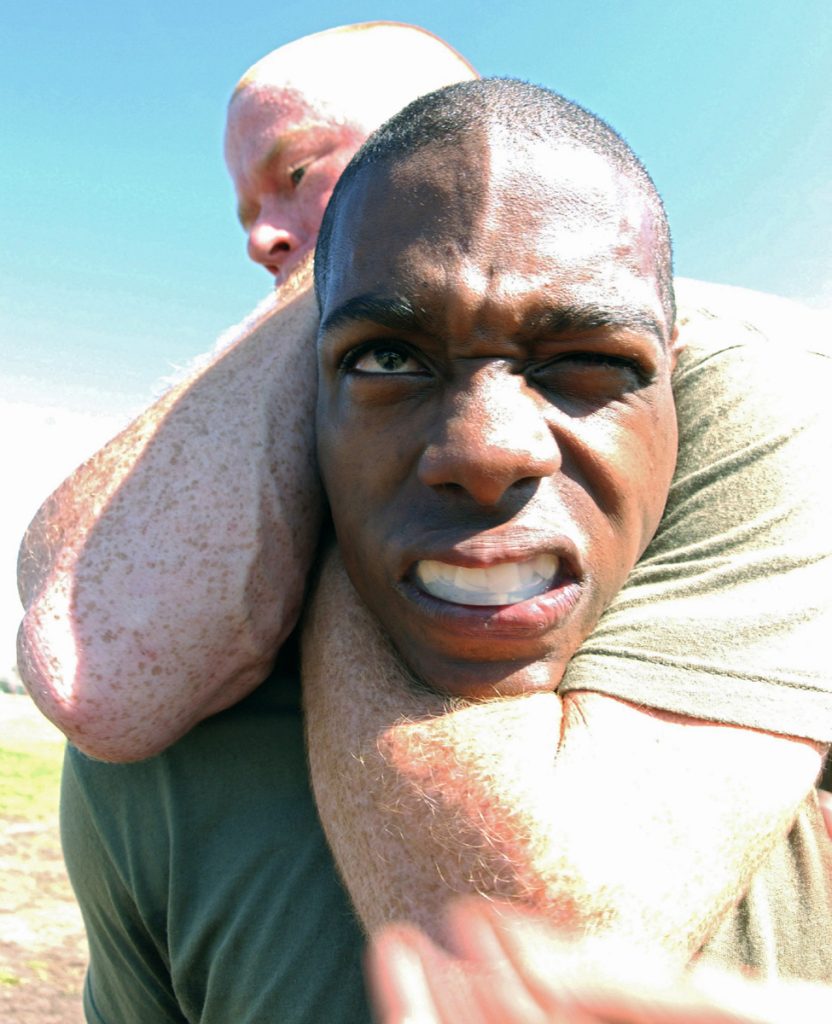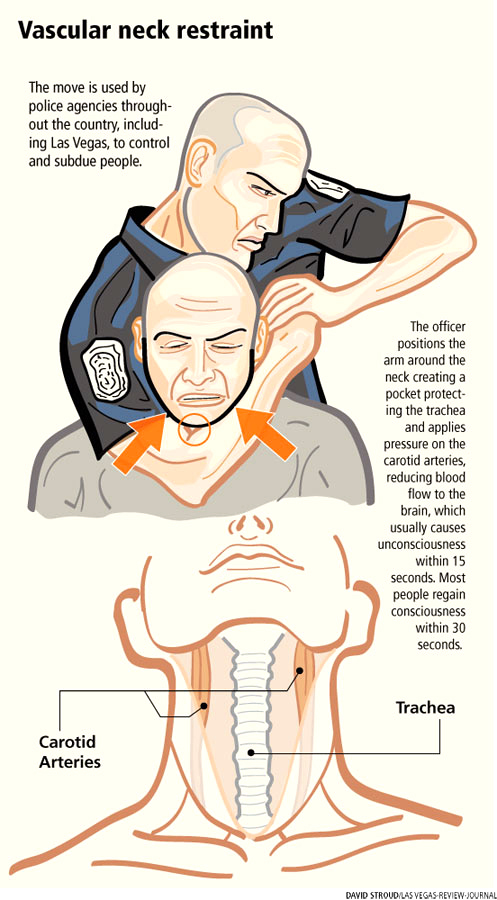Attacking the Neck for Restraints, Takedowns and Chokes
A martialist must have a working knowledge about the anatomy, physicality and the law when it comes to wrapping arms around the neck for any reason, a walk-away, takedown and/or any choke. Here is quick, mandatory report on what you should know on the subject in general.
First, I would like to establish my anecdotal experience. I am from an era, starting in the 1970s in martial arts and police work where chokes were very popular and roughly trained. A choke was a go-to, common enforcement move and in 26 years I have choked out about 10-12 or so people. That is not a lot, As an obsessive martial artist, training and experience has helped me use alternatives to choking. But I have witnessed and partaken in some 40 or more. Every suspect quickly recovered as we were taught to monitor the suspect’s responses. And I have been attacked by a few chokeholds, most during during arrests (read on for the worst). And in those olden training times, it was not uncommon to be accidentally choked out (and knocked out) sometimes in class. Times have changed.
Chokes were treated very flippantly in those olden times. Sadly, in the recent decades that followed, for whatever reasons – be they a lack of knowledge-training, etc., simple chokes have caused damages and deaths that have enraged into socio-political, national and international uproars. You do not want you or your students, compatriots and-or employees to be a part of such uproars. Results may include imprisonment these days, by ignoring the facts. Chokes are risky yes, but, still, a martialist must have a working knowledge of chokes and non-choke, neck grabs.
While such sport-choke and related sport neck takedown methods are useful to practice and know, they are small in comparison to self defense, crime, law and war problem-solving. So, this subject-study will include civilian, enforcement and military realities, as well as generic, applications of arm wrap, chokes and neck grabs.
Due to popularity and fandom of martial arts sports, most of the neck-related, training attention, time-hubris is spent on sport tap-out chokes down on the mats to win matches and pro fights. This sports version eats up “all the oxygen” (if you will pardon the pun) in youtube videos and internet searches. Several martial arts will claim there are “100s” of chokes, but no. Instead, there might be hundreds of chess-like approaches and situations to inch into these chokes. The choke itself is “checkers simple.” Blood and air.
And important – all neck attacks are not chokes…however, neck attacks are loosely, flippantly called “chokes” or “chokeholds” by many. We’ll be looking at the common arm-related ones not crushing-hand chokes, but crushing hand chokes might cause similar injuries as arm wraps.(It should also be noted here that choking by the hands not arms is a very big domestic violence problem. That’s another essay. But generically speaking, the injuries are very the same.)
The big two… for our rear arm wrap attack and takedown essay and yes – as well as grounded problems, here are two main neck arm-wrap-grabs for rear chokes and takedowns. See the drawings below, single arm and double arm wraps. You will find there are numerous nicknames for chokes. Some do help identify the move-position. Blood chokes are often called “sleepers” because the “chokee” thinks he is really just neck-uncomfortable and still okay… and… and… he’s out. While an air choke will probably cause the chokee to “air swim,” like he is drowning on dry land.
What are the legal and medical definitions? Law Insider defines a neck restraint as “the use of any body part or object to attempt to control or disable a person by applying pressure against the neck, including the trachea and-or carotid artery with the purpose, intent, or effect of controlling or restricting the person’s movement or restricting the person’s blood flow or breathing, including chokeholds, carotid restraints, and lateral vascular neck restraints.” (For the record, a “Lateral Vascular Neck Restraint® (LVNR®) is a control technique applied to the sides of the neck, using a combination of physiological factors to restrict blood flow to the brain which may cause the subject to lose consciousness.)
Dr. Google defines choking as a strangulation. “Strangling cuts off the flow of oxygen to the brain in one or more ways. Strangulation compresses the carotid artery or jugular veins, resulting in cerebral ischemia. Cerebral ischemia is caused by disruption of the blood supply, and thus oxygen, to the brain, particularly the cerebrum. Global ischemia is caused by cardiac arrest, shock, carotid occlusion,hypotension, asphyxia, or anemia. Focal cerebral ischemia is usually related to cerebral vascular atherosclerosis. Strangulation is defined as asphyxia by closure of the blood vessels and/or air passages of the neck as a result of external pressure on the neck.”
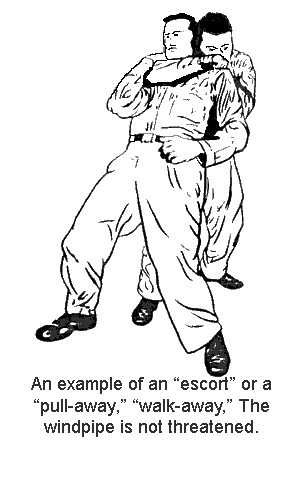
Tick-Tock…. In May, 2023, a former U. S. Marine interrupted a disturbance and threats on a New York City subway with a choke, one that according to witnesses the hold lasted 15 minutes. The person died. The Marine disputes the time length and denies lethal intent, but nonetheless the man died. This caused a serious socio-political incident and put the Marine under indictment for murder. One must be very cautious when doing any neck wrap choke-contact for criminal and civil problems. Did a restraint slip into a prolonged blood choke or an air choke? Did the hold last too long?
Very Well Health reports that, a “A medical evaluation is crucial if someone’s been strangled. An injury to the trachea may not appear to be serious right away, but swelling in the tissues around the trachea can lead to a secondary restriction of airflow a few minutes after the neck is free.”
So how long can you squeeze? Police files report officers that have blood-choked suspects held for 30 seconds have died. That’s a short time. But shorter times are on record. There are other times the suspects hang on, struggling for longer. The old and general advice with a blood choke is to monitor the opponent. You can feel when someone “goes to sleep.”
How long is long then? “A 17-member panel of submission experts (including BJJ black belts, experienced grapplers, former MMA athletes, and medical professionals) analysed 81 UFC matches between 1993 and 2020 that ended in strangulation submission due to a LOC (as opposed to tapping). Each examiner reviewed each film (blinded to the other’s interpretation) to determine the time between full application of the technique and LOC. The mean time to LOC was 9.0 seconds, with a standard deviation of 2.5s. (Note: this had to have included ground chokes and this section of Level 2 takedowns is only covering standing rear arm wrap chokes. Still we can glean related information.) These results were consistent with previous studies in compliant volunteers, indicating that skillful application of a choking/strangulation technique will cause LOC regardless of defense mechanism…the triangle choke (probably down on the mat) displayed a significantly faster time to LOC of 7.2 seconds.” – Sam Gilbert
Crushing the trachea can cause death. There are incidents on police records of officers who are relatively untrained in this subject matter and they have accidentally crushed the trachea. The damage can range from minor vocal cord weakness to fractures of the larynx or trachea. These fractures can cause air to escape into the neck and chest, leading to significant respiratory compromise and even death if not treated quickly.
Basic neck structure injuries too… As I have mentioned not all neck-related, rear pull takedowns involve blood and air restraint, choke-to-unconsciousness intent. In terms of using the neck for takedowns and counters, in some cases you must worry about damaging the neck skeletal structure. But non-chokes are not without some medical, legal and civil law dangers.
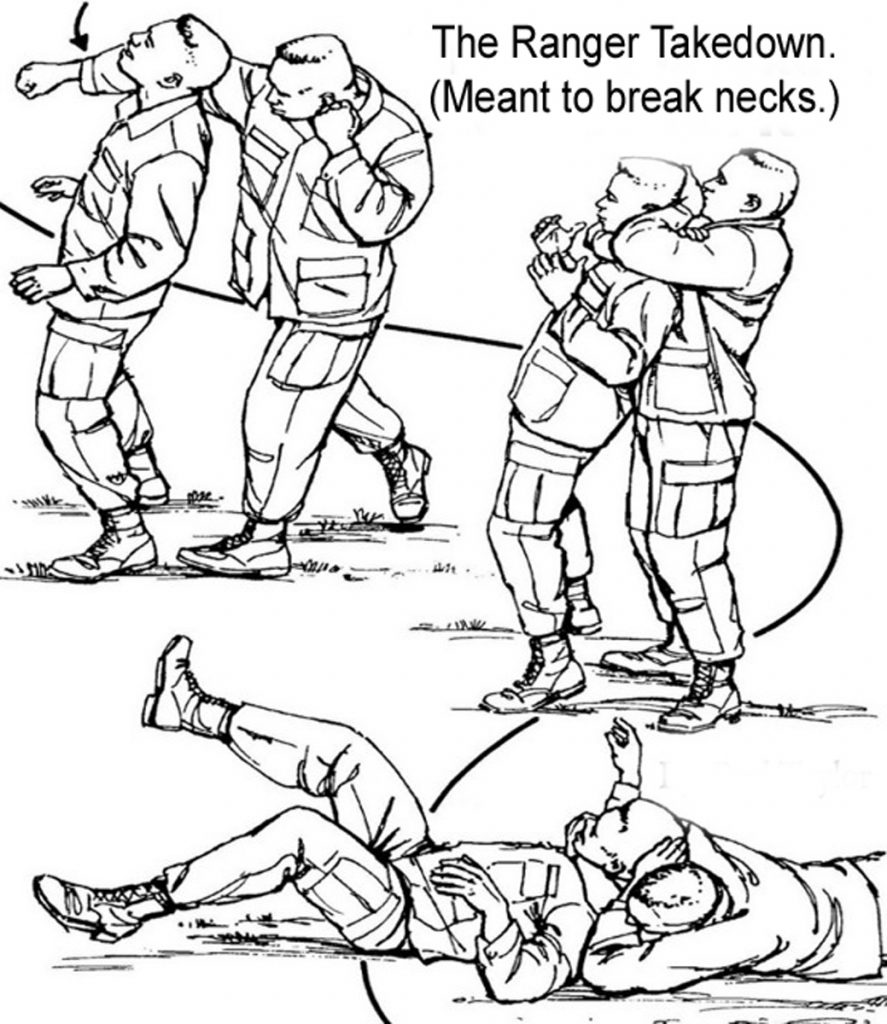
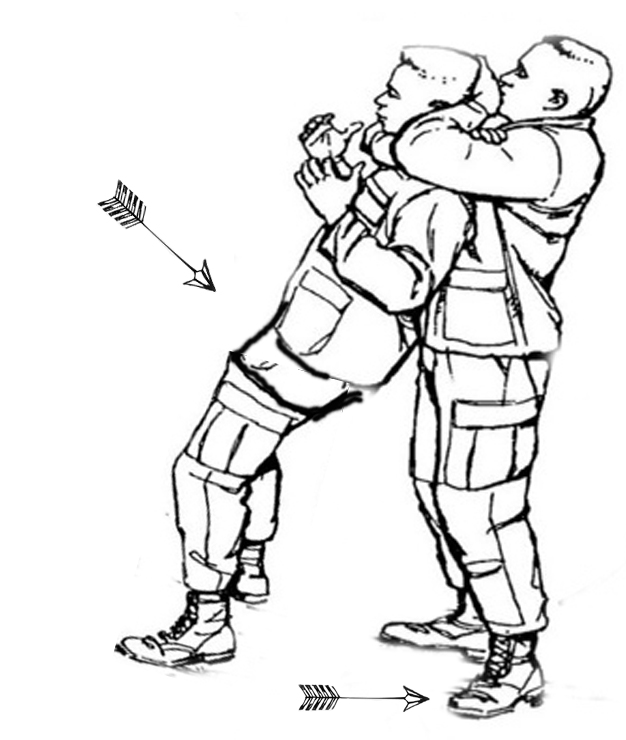
Other related neck structure injuries? I know of a few rather world famous, life-long MMA champs that have stents placed in their trachea due to decades of rough training simulated chokes, and real competition chokes. This operation is called a tracheostomy.
Dr. Earl Morgan, Forensic medicine (and a Judo Black belt) adds…”In all of the combative grappling sports the “choke” hold rules require varying degrees of cervical spine protection. Of course, what makes repetitive chokes in combative grappling so safe (in class) is the health and conditioning of young martial artists. My college judo coach cautioned me to seriously consider allowing chokes in anyone over the age of 40. At the time I was in my 20’s and had no idea what the big deal was. He also spoke of the ‘40-year syndrome.’ This is where you turn 40 and suddenly you have all the aches and pains from all the ways you abused yourself when you were young, whether with drugs, alcohol, athletics, manual labor or other factors, it doesn’t matter. He was a much wiser man than I realized.”
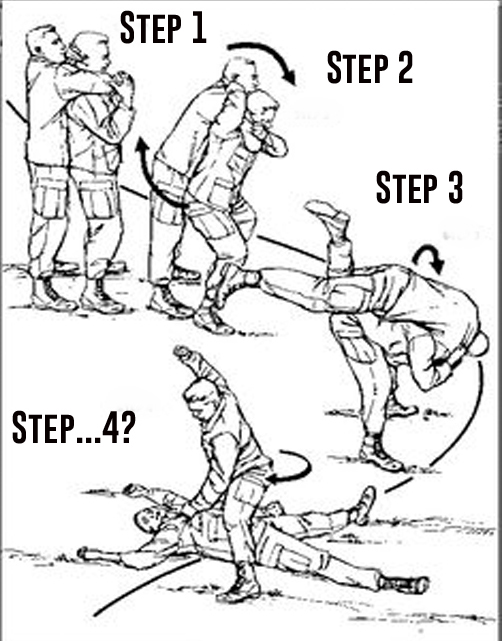

Banning chokes...I have been paid by some police agencies through the years to write subject-matter-expert studies on the validity of neck restraints and chokes. In some jurisdictions worldwide police agencies have continued to defend the use of the carotid restraint hold for decades, claiming that it is safer and more effective than using a police baton, taser, or pepper spray. Other jurisdictions have banned its use entirely while still other jurisdictions have ruled that it may only be used in extreme situations where deadly force is justified.
Most enforcement agencies worldwide have banned this “choke’ tactic (or any neck contact for that matter) for many years now. Some allowances exist for when the officer is faced with deadly force. Yet, in a strange Catch-22 circle jerk, these last-resort, life saving choke options are still NEVER TAUGHT, for fear of…being publically seen-caught just teaching the dreaded chokes!
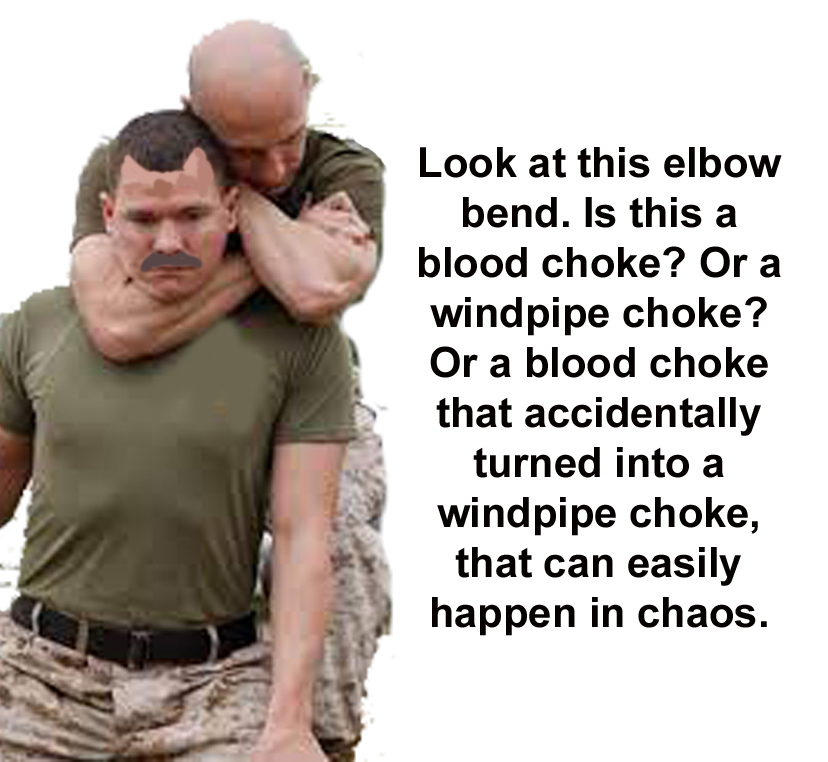
At least think about this...In a military context, other than when trying to capture prisoners, a choke is a strangulation meant to kill the enemy. But for citizens? These same legal-test concerns hold true for citizens. Civilians must be justified under a reasonable dire threat to windpipe choke someone. If you can’t comprehend the facts here, or be able to consider, discuss, teach and articulate them, you and yours might someday be in moral, ethical and legal (jail and lawsuit) dilemmas.
(This essay on non-choke and choke related neck wraps rear takedowns appear in Level 2 of my Force Necessary:Hand course, thus the essay here, which appears in the outline and my upcoming Unarmed Combatives book in 2024.)
______________________________________
